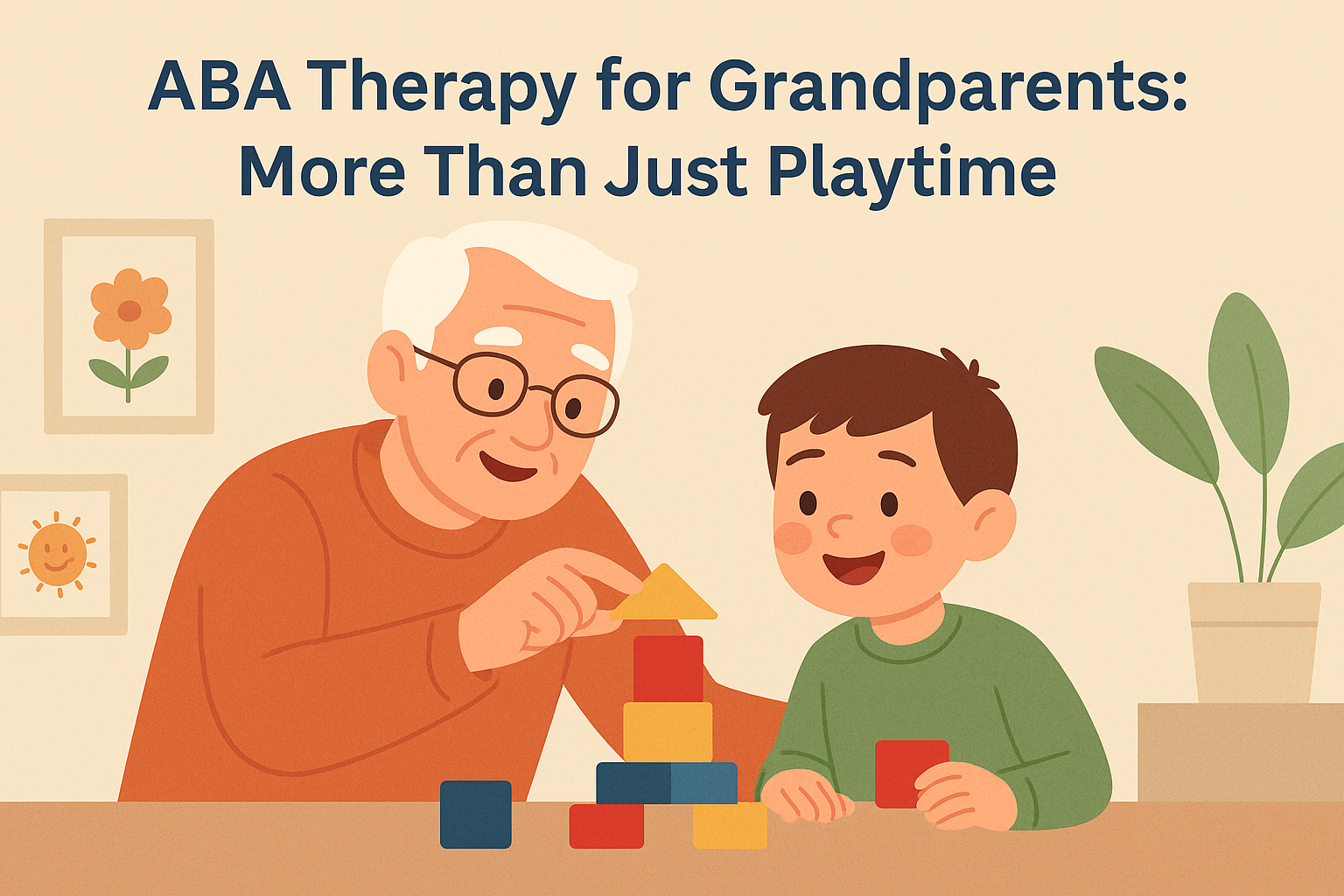HB Field
Andi Fathe-Aazam •
September 11, 2025
ABA Therapy for Grandparents: More Than Just Playtime
ABA Therapy
Grandparents

ABA Therapy for Grandparents: More Than Just Playtime
By Andi Fathe-Aazam, BCaBA
Introduction
When you peek into an ABA Therapy session, it might look like your grandchild is just… playing.
Building towers of blocks.
Baking a messy batch of cookies.
Dancing to Baby Shark for the 12th time (bless your patience).
But here’s the secret: ABA therapy isn’t a tutoring session or random playtime; it’s science in disguise. Every silly game, every high five, every “First clean up, then tablet” moment has a purpose. There’s a method to the madness.
What’s Really Happening Behind the Play
- Tiny Steps, Big Wins: ABA breaks big skills (like brushing teeth) into bite-sized steps (pick up the brush, add toothpaste, brush top teeth…). Each step is achievable, and each success builds confidence and independence.
- Fun = Learning: The more fun the activity, the easier it is for the brain to absorb new skills. That block game? It’s not “just stacking”—it’s secretly teaching turn-taking, problem-solving, and communication.
- Repetition + Celebration: Doing something again (and again) with enthusiastic praise actually rewires the brain for success. Kids are more likely to repeat the behavior when it feels rewarding.
Why It’s Not Just “Tutoring”
Tutoring teaches academic subjects. ABA teaches life.
- A tutor helps with math worksheets.
- An ABA therapist might use baking cookies to teach math (measuring, counting), communication (“Can I stir?”), and patience (“Wait for your turn”).
- A tutor teaches spelling words.
- An ABA therapist teaches meaningful communication—how to ask for help when spelling gets tough (an everyday survival skill).
ABA Therapy isn’t about filling a child’s brain with facts. It’s about equipping them with the tools to thrive in the real world.
How Grandparents Can Join the Fun
Your role as Grandma or Grandpa? Priceless. Here’s how you can turn everyday moments into powerful ABA moments:
- Stick with the Plan: If the therapist suggests a strategy (“First clean up, then play”), echo it. Consistency across family members helps kids learn faster and easier.
- Make Everyday Life the Lesson: Play board games, bake, garden, or go for walks. ABA thrives in real-world settings, where skills matter the most.
- Celebrate the Little Things: When your grandchild zips their jacket or tries a new word, cheer like they just won the Super Bowl. That joy is fuel for learning.
Why It Matters
Research shows that kids who receive early, playful, structured ABA therapy often gain stronger communication, social, and independence skills. The “fun and games” aren’t filler—they’re the vehicle for real, lasting growth. And when learning feels like play, it sticks.
Conclusions
Next time you see your grandchild laughing through an ABA session, remember:
- There’s a science behind the smiles
- It’s not just purposeless play
- It’s not tutoring
- It’s progress, disguised as fun!! 💡✨
References
- Cooper, J. O., Heron, T. E., & Heward, W. L. (2020). Applied Behavior Analysis (3rd ed.). Pearson.
- Fuller, E. A., & Kaiser, A. P. (2020). The effects of early intervention on social communication outcomes for children with autism spectrum disorder. Autism, 24(2), 338–349.
- Koegel, L. K., Singh, A. K., & Koegel, R. L. (2014). Improving motivation for academics in children with autism. Journal of Autism and Developmental Disorders, 44(9), 2361–2373.
- Landa, R. J. (2018). Efficacy of early interventions for infants and young children with, and at risk for, autism spectrum disorders. International Review of Psychiatry, 30(1), 25–39.
- National Research Council. (2001). Educating Children with Autism. Washington, DC: National Academy Press.
- Skinner, B. F. (1953). Science and Human Behavior. Macmillan.

